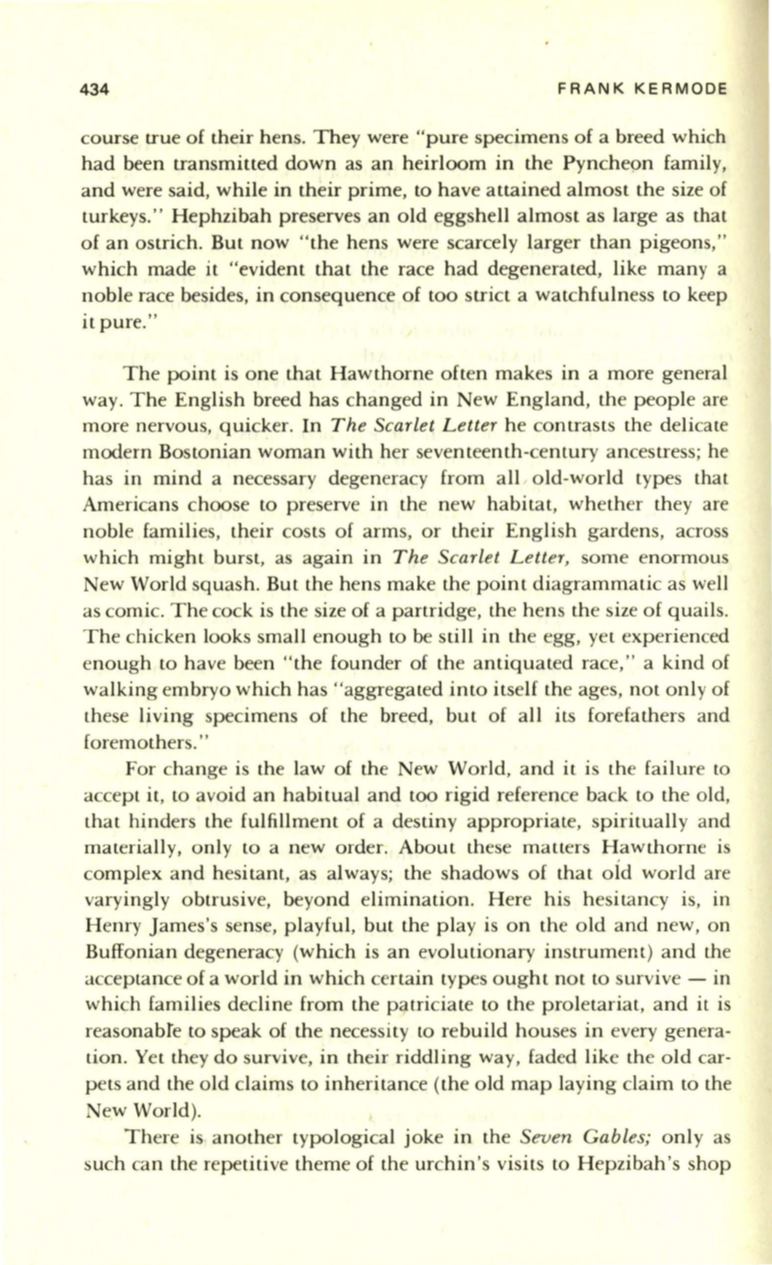
434
FRANK KERMODE
course true of their hens. They were "pure specimens of a breed which
had been transmitted down as an heirloom in the Pynchepn family,
and were said, while in their prime, to have attained almost the size of
turkeys." Hephzibah preserves an old eggshell almost as large as that
of an ostrich. But now "the hens were scarcely larger than pigeons,"
which made it "evident that the race had degenerated, like many a
noble race besides, in consequence of too strict a watchfulness to keep
itpure."
The point is one that Hawthorne often makes in a more general
way. The English breed has changed in New England, the people are
more nervous, quicker. In
The Scarlet Letter
he contrasts the delicate
modern Bostonian woman with her seventeenth-century ancestress; he
has in mind a necessary degeneracy from all old-world types that
Americans choose to preserve in the new habitat, whether they are
noble families, their costs of arms, or their English gardens, across
which might burst, as again in
The Scarlet Letter,
some enormous
New World squash. But the hens make the point diagrammatic as well
as comic. The cock is the size of a partridge, the hens the size of quails.
The chicken looks small enough to be still in the egg, yet experienced
enough
to
have been "the founder of the antiquated race," a kind of
walking embryo which has "aggregated into itself the ages, not only of
these living specimens of the breed, but of all its forefathers and
foremothers. "
For change is the law of the New World, and it is the failure to
accept it, to avoid an habitual and too rigid reference back to the old,
that hinders the fulfillment of a destiny appropriate, spiritually and
materially, only
to
a new order. About these mallers Hawthorne is
complex and hesitant, as always; the shadows of that
oid
world are
varyingly obtrusive, beyond elimination. Here his hesitancy is, in
Henry James's sense, playful, but the play is on the old and new, on
Buffonian degeneracy (which is an evolutionary instrument) and the
acceptance of a world in which certain types ought not to survive - in
which families decline from the patriciate to the proletariat, and it is
reasonabre to speak of the necessity to rebuild houses in every genera–
tion. Yet they do survive, in their riddling way, faded like the old car–
pets and the old claims to inheritance (the old map laying claim to the
New World).
There is another typological joke in the
Seven Gables;
only as
such can the repetitive theme of the urchin's visits to Hepzibah's shop


